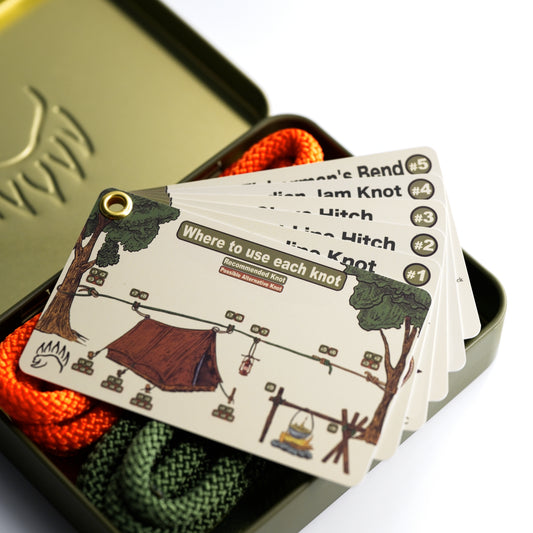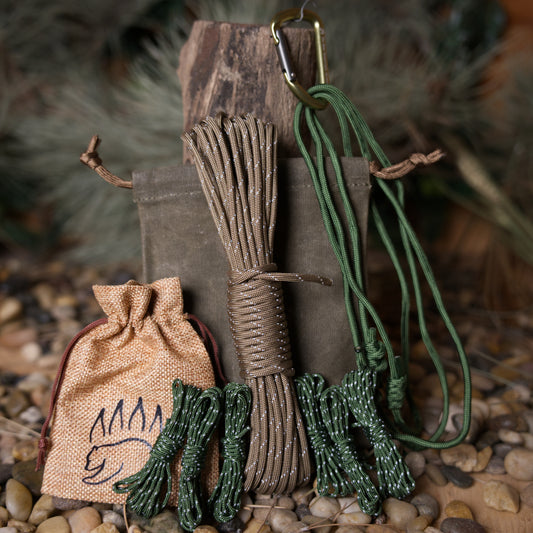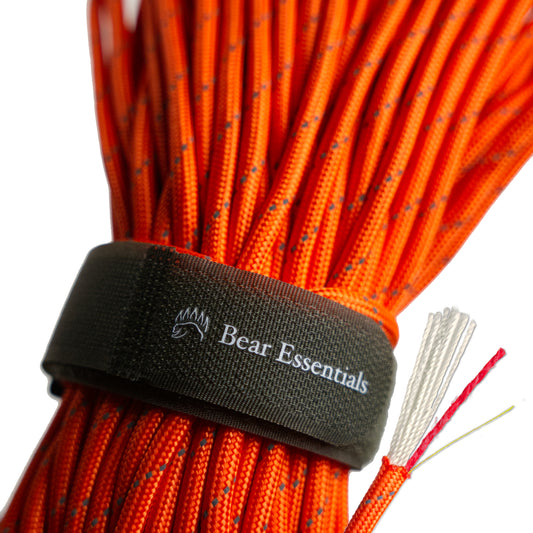How to Tie the Racking Bend
Usage
The Racking Bend is a knot used to join ropes of different sizes or materials, often in maritime and utility settings. It's particularly useful in tasks like mooring, towing, and bundling, offering a strong connection but requiring careful tensioning to avoid slippage.
Why Learn the Racking Bend?
The Racking Bend is designed for joining ropes of different diameters and materials, providing a reliable connection for tasks in boating, rigging, and utility work. Its ability to handle mismatched ropes makes it invaluable for outdoor enthusiasts and sailors.
Common Uses
-
Boating and Marine Applications:
- Joins mooring lines of different sizes for docking.
- Connects ropes for towing or temporary rigging.
-
Utility Applications:
- Bundles items like cables or lumber with mismatched ropes.
- Secures ropes for temporary load-bearing setups.
ABOK Number
(Ashley Book of Knots)
Other Names
Category
|
Notable Features
- Strong Connection: Holds well under moderate loads.
- Handles Unequal Ropes: Joins ropes of different diameters or materials effectively.
- Versatile Use: Works well in boating, rigging, and utility scenarios.
- Easy to Adjust: Allows for retensioning before final tightening.
Variations
No true variations listed. For added security, increase racking turns to 5 for slicker ropes or tie stopper knots on both tag ends to prevent slippage.
Similar Knots
Sheet Bend vs. Racking Bend
- Pros: Simpler to tie and effective for unequal ropes, widely used.
- Cons: Less secure for very different rope sizes compared to the Racking Bend.
Double Fisherman’s Knot vs. Racking Bend
- Pros: Stronger and more compact for similar-sized ropes.
- Cons: Jams tightly and less suited for unequal ropes than the Racking Bend.
History
The Racking Bend has maritime origins, developed by sailors to join ropes of different sizes for mooring or towing. It is referenced in The Ashley Book of Knots (#1462) and is valued for its ability to handle mismatched ropes securely. Its use in utility tasks for bundling or rigging reflects its adaptability beyond nautical settings, making it a staple in practical ropework.
Security Level
The Racking Bend provides moderate to high security for joining unequal ropes, holding well under moderate loads when tied with sufficient racking turns. It may slip if not properly tightened or if used with very slick ropes. Adding stopper knots or extra turns ensures reliability for critical boating or utility tasks.
Downsides
- Bulky structure: Larger than other bends, can be awkward in tight spaces.
- Slippage risk: May loosen under heavy or dynamic loads without backup knots.
Structure
- Form a bight with the thicker rope, holding it to create an open loop.
- Pass the thinner rope through the bight, wrapping it around both sides of the loop.
- Make alternating wraps (racking turns) with the thinner rope, weaving it over and under the bight’s sides 3-4 times.
- Pass the thinner rope’s end through the bight to secure the wraps, then pull both ropes to tighten.
- Add a stopper knot (e.g., Overhand Knot) to the thinner rope’s end for security and check the knot’s grip.
Pro Tip: Use 3-4 racking turns for optimal grip, adding more for slick ropes. Wet the ropes before tightening to reduce friction and ensure a snug knot.
FAQ
Is the Racking Bend strong enough for heavy loads?
It’s reliable for moderate loads when tied with 3-4 turns, but add stopper knots for heavier tasks.
What’s the best rope for the Racking Bend?
Thick, flexible ropes like nylon or manila work best, with the thinner rope being smooth for tight wraps.
How does the Racking Bend compare to the Sheet Bend?
The Racking Bend is better for very unequal ropes, while the Sheet Bend is simpler but less secure.
Can the Racking Bend be used in climbing?
No, it’s not safe for climbing due to its slippage risk; use knots like the Double Fisherman’s instead.
Why choose the Racking Bend over the Double Fisherman’s Knot?
The Racking Bend is better for joining unequal ropes, while the Double Fisherman’s is stronger for similar ropes but jams.
Important Notes on Safety
Common failure points include insufficient racking turns or loose tightening, which can cause the knot to slip. Always verify the wraps are snug and test the knot under light load before use.
Check ropes for wear or slickness before tying.
Ensure 3-4 racking turns for a secure grip.
Practice tying in low-stakes settings first.







